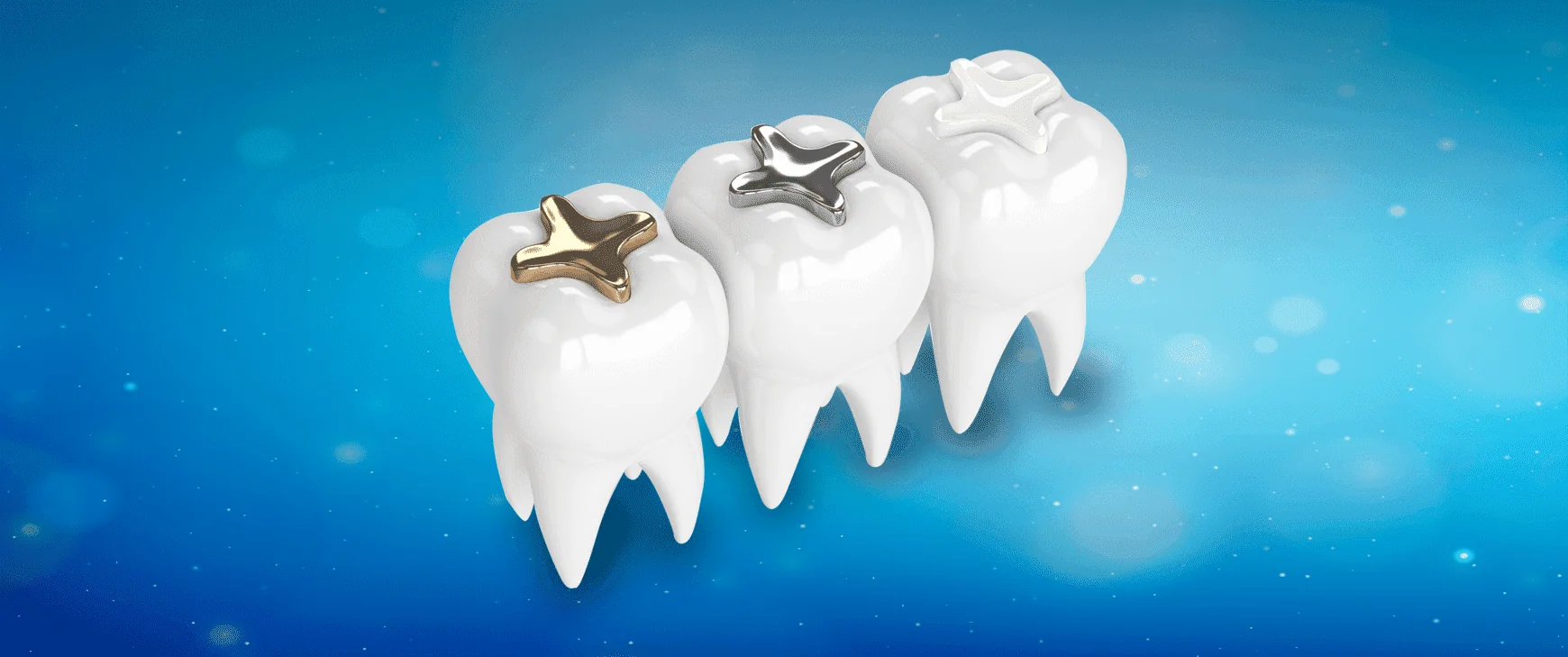Aesthetic Tooth Filling
Salih ÖNDER2023-10-26T14:47:40+03:00Aesthetic filling or composite filling as it is used in dentistry is the name given to fillings that are adjusted according to the original tooth color of the patient and therefore cannot be visually distinguished from natural tooth enamel. These fillings are designed by a specialist dentist to be in the form of natural teeth in shape and color. It is aimed that the filling color is exactly compatible with the tooth color of the person, the filling borders are not clear, and thus, the filling is not visible to the naked eye when viewed from the outside. Thanks to aesthetic fillings, everyone can have a natural and beautiful smile.
With the development of aesthetic awareness, individuals now apply to dentists not only for functional problems, but also for aesthetic reasons. Hospitadent makes it possible for everyone to have a natural and beautiful smile by providing aesthetic filling services in all its branches with the latest technology filling materials and expert staff.
What is aesthetic filling?
Aesthetic fillings, which are preferred by individuals who want to have a perfect smile, are now used in the back teeth as well as in the front teeth. Amalgam fillings, which were dark in color and did not look aesthetically pleasing, were used in the treatment of dental caries. Today, instead of these, composite fillings with the same color as the teeth are preferred.
Although composite fillings were previously preferred only for anterior teeth, with the advancing technology, extremely durable composite fillings that are resistant to chewing have begun to be obtained and are now suitable for use in all teeth. The composite resin used as an aesthetic filling material is a plastic mixture containing silicon dioxide.
Composite filling, which is popularly called white filling, is filled in the teeth when it is in dough consistency and hardened by irradiation with halogen or LED light. Since it is chemically bonded to the tooth tissue, it is extremely resistant to pressure and abrasion. Composite fillings are not only used for filling but also to correct aesthetic defects in teeth.
How is aesthetic filling done?
Aesthetic filling can be completed in a single session; It is a practical, robust and natural-looking filling application. When it is done by a dentist who is an expert in the field, an extremely robust and aesthetic appearance is obtained. A series of procedures are required during the application of aesthetic filling:
- First, the area to be filled with regional anesthesia is anesthetized. Superficial caries may not require anesthesia; However, regional anesthesia is usually applied before the filling, so that the patient does not feel pain and pain. In this way, the dentist can easily perform the procedure without worrying about causing pain to the patient.
- The decayed tooth tissue is cleaned using special tools designed for this purpose.
- The opened cavity is specially shaped by the dentist for better adhesion of the filling material. In order to increase the bonding surface to the area to be filled with composite filling, a process called beveling is applied. Beveling is the surface expansion process by rounding the fill edges. In this way, the filling will be more strongly attached to the tooth tissue.
- The central part of the tooth, called the pulp, contains nerves that are sensitive to pain. In order to reduce the sensitivity of the pulp to stimuli, materials that reduce pain transmission are placed at the bottom of the cavity opened for filling purposes.
- If the decay has reached the side walls of the tooth, a filling mold is used to ensure that the filling is smooth and does not overflow.
- An acidic substance is applied to the tooth and the surface of the tooth enamel is made rough. Thus, the filling bonding surface is further increased. Afterwards, the acidic substance is washed and cleaned from the mouth.
- An application called bonding is applied to the tooth surface, which enables the bonding of the filling material with the tooth.
- Composite filling material is prepared in the appropriate consistency and color and is placed in the gap opened in thin layers and hardened by irradiation each time.
- Finally, if the mold is used, it is removed, the excess in the tooth and the height, if any, are corrected and smoothed with a rasp tool.
- Filled teeth are polished and the process is completed.
What are the advantages of aesthetic fillings?
It can be said that aesthetic fillings have various advantages both during application and in the following stages. One of the most important advantages during application is that it can be done practically and quickly. White filler;
- It can be applied to many teeth in the same session and the treatment can be completed in a single session.
- Since its color can be adjusted according to the natural tooth color of the person, it offers an extremely aesthetic appearance.
- It is an important advantage that it can be used by patients shortly after treatment.
- There is no need for a new session for polishing and cleaning, and these procedures can also be applied during the filling session. This also saves time.
- Compared to amalgam fillings, very good results are obtained aesthetically.
- It is extremely durable as it is chemically bonded to the tooth.
It is less likely to rot from the joints seen in gum fillings.
Unlike amalgam fillings, it is possible to apply aesthetic fillings to all teeth, including anterior teeth.
Since amalgam fillings are metal, they can expand and cause cracks in the tooth. It is also thought that they may pose a health risk due to the mercury they contain.
Composite filling is more economical than porcelain and gold fillings and can be completed in a single session.
Are there any disadvantages of aesthetic filling?
Aesthetic fillings can be discolored and stained as a result of the use of substances such as tea, coffee, cola, and cigarettes, which have the property of staining the teeth. For this reason, if you have had aesthetic fillings, you should stay away from substances that have the property of staining such teeth. Especially if you have fillings in the front teeth, the color change will cause an unpleasant appearance. The first 48 hours after the filling process is the most sensitive period to color change and it is more important to stay away from the related substances, especially during this period.
Sensitivity may develop in the teeth after composite filling treatment. Although this situation is usually short-term, in some cases, it can cause sensitivity that does not last for a long time. If you encounter such a situation, you will need to see your dentist.
Although composite fillings are extremely durable, they still do not have the durability of natural tooth enamel. For this reason, behaviors such as cracking nuts, biting nails, opening soda caps, biting a pencil will result in damage to the filling.
Composite fillings are insufficient in teeth that have lost a lot of tissue and have undergone root canal treatment, and it may be necessary to cover materials such as porcelain and zirconium. Although rare, some shrinkage may occur in composite fillings during curing. This causes a gap between the adjacent teeth and the filled tooth and the filling is insufficient.
Composite filler also tends to shrink over the years. As a result, gaps form between the tooth and the filling material, which leads to leakage. This leakage prepares the ground for the formation of caries in the teeth. For this reason, dentist checks should be made at regular intervals and fillings should be renewed when necessary.
How long is the life of the aesthetic filling?
Aesthetic fillings do not have a negative effect on teeth, gums or general health. After filling the teeth, careful brushing of the teeth and regular floss are important in maintaining oral and dental health. Composite fillings remain intact for many years as long as they are used correctly. Although it has a very durable structure thanks to the filling material prepared with the latest technology, it is still not as strong as natural teeth. For this reason, their lifespan can be shortened, especially when forced with hard foods. For example, breaking ice with these teeth can damage the filling. The duration of use of aesthetic fillings varies based on various factors. Some of these factors are;
- The quality of the material used as a filler,
- The form and size of the filling,
- It can be listed as the patient’s dental care and nutritional habits.
Aesthetic fillings can be used for 8-10 years or more, depending on the factors listed. The duration of the procedure also varies according to the number of teeth and the condition of the teeth, and is determined by the Dentist after the examination.
In which cases is aesthetic filling done?
Aesthetic filling can be applied in all cases where filling is required. Aesthetic fillings can be applied in the treatment of decayed teeth, broken or worn teeth, or in order to correct the color of discolored teeth. Composite filling is also used to close the gaps between the teeth or to fill the teeth after root canal treatment.
Treatment Summary
Number of Transactions
2-3
Return to Work Process
Now
Processing Time
10 Days
Full Recovery Process
Now
Anesthesia Method
Local anesthesia
Persistence of Results
5 Years
Sensitivity Process
Non
Eating - Drinking Process
2 Hours Later
Note: *The information and recommendations on this page are for informational purposes only. Please consult your doctor for diagnosis and treatment. WhatsApp line.
Bütün İşimiz Diş


